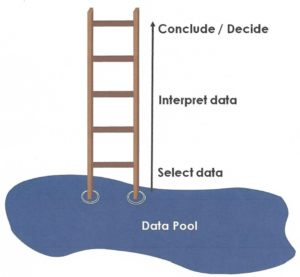 Introduction
Introduction
During the COVID-19 pandemic, it has been exceedingly difficult to meet curriculum expectations particularly as they relate to developing skills of Investigation and relating science to technology, society and the Environment. The use of tools like the Ladder of Inference are a cornerstone to meeting these objectives.
At the beginning of my career in 1998, I found myself at the Ontario Institute for Studies in Education (OISE) at the University of Toronto where I was working on my honours specialist in biology. As a part of that process, I wrote a paper on the use of Problem Based Learning (PBL) in secondary school science classrooms. Having grown up in Burlington, ON, I was aware of the PBL model that McMaster University was well known for having pioneered for the study of medicine in Canada. As a former research scientist, this approach appealed to me as a way to help students learn to make conclusions, work through complex scenarios and come to solutions for difficult problems. My feeling was that students would need these skills throughout their life journey, and as a teacher in the Hamilton-Wentworth District School Board, it would make sense that many would one day end up at McMaster. Starting the process of understanding how to do PBL in high school would be of benefit to them. The problem is that PBL is extremely time consuming and difficult to incorporate into a secondary school classroom, particularly when students do not have a broad knowledge foundation for their PBL inquiries.
Resources
Investigative Thinking Strategies -Complete article
Investigative Thinking Strategies Ladders of Inference Handout-blank
Ladder of Inference Template – English
Student Exemplar:


Thanks for sharing these excellent resources Craig!!!!!!!!!!!

 Introduction
Introduction